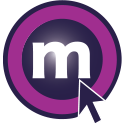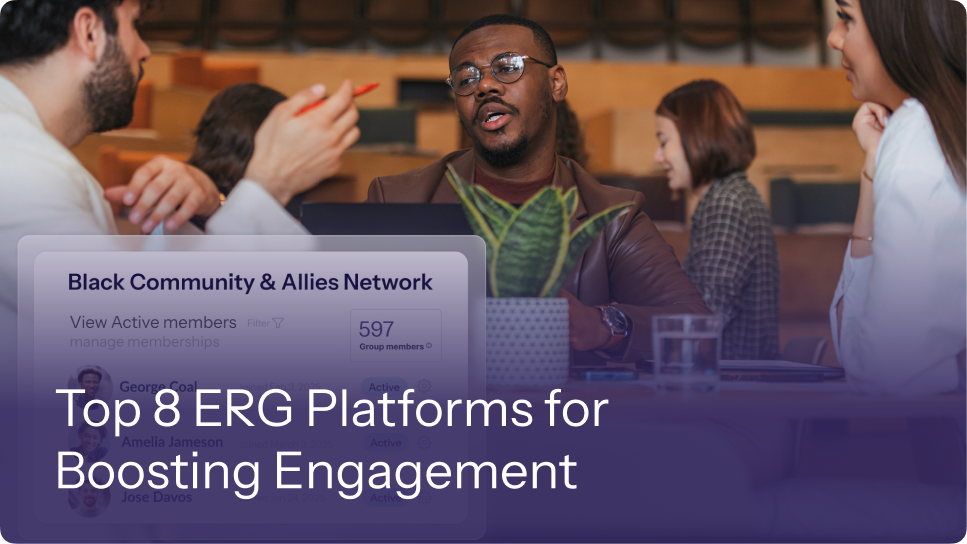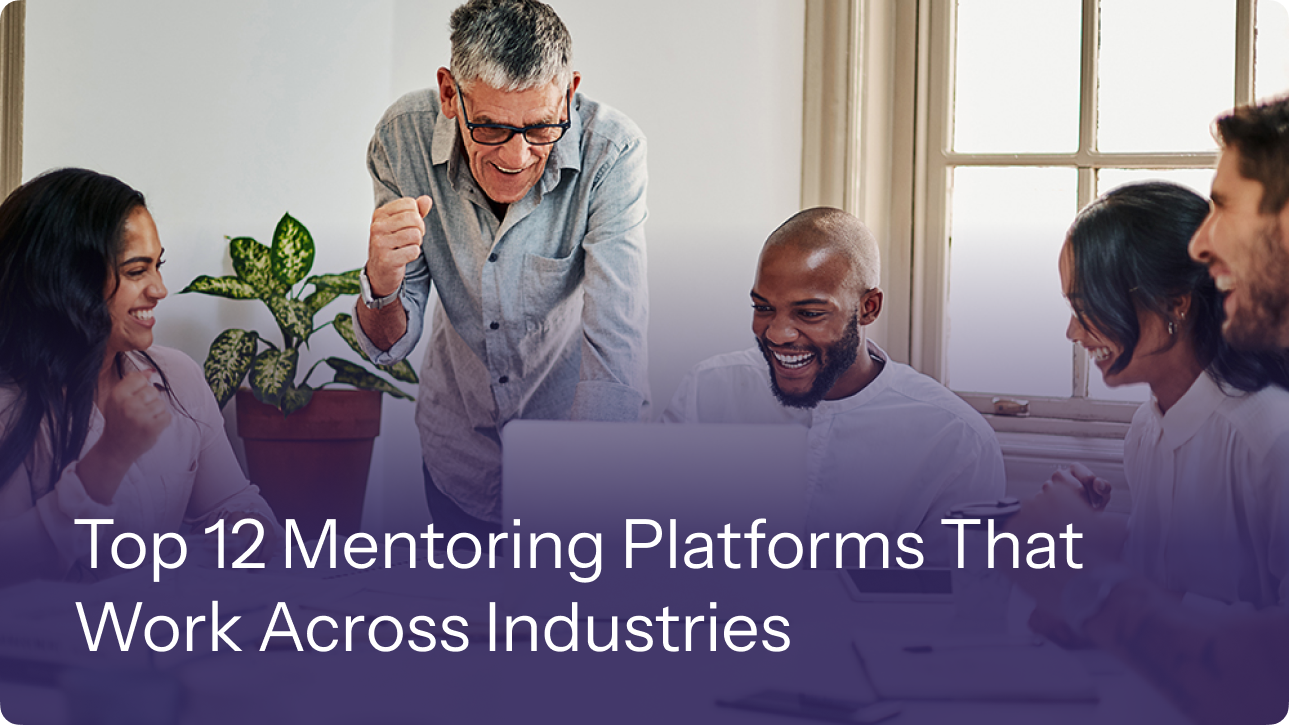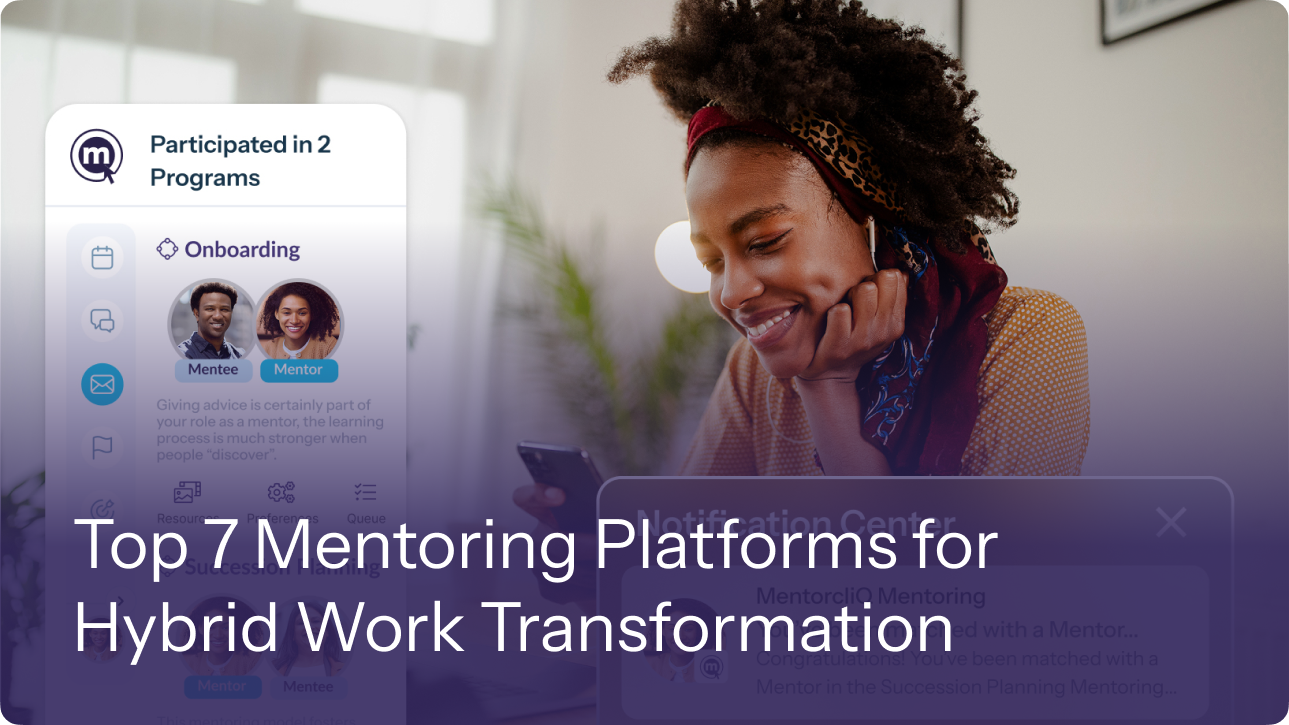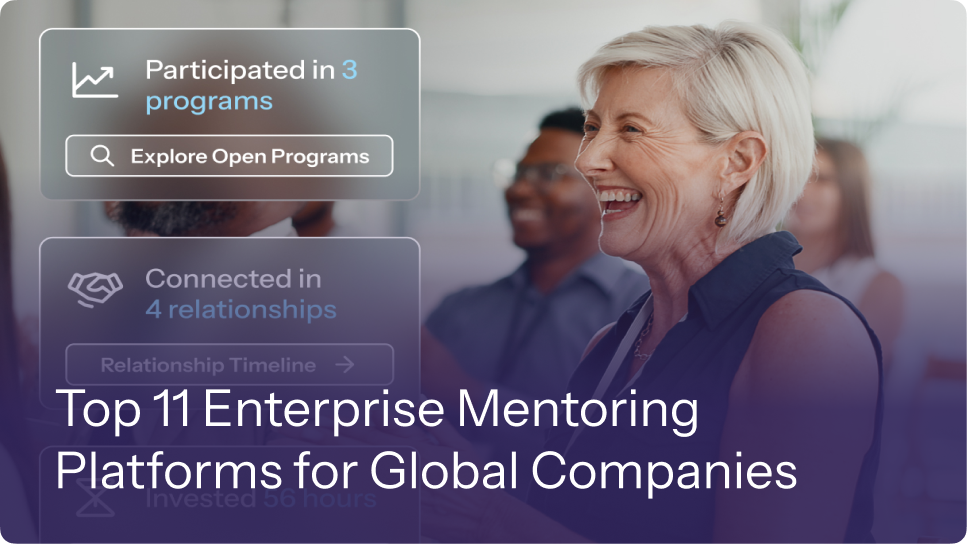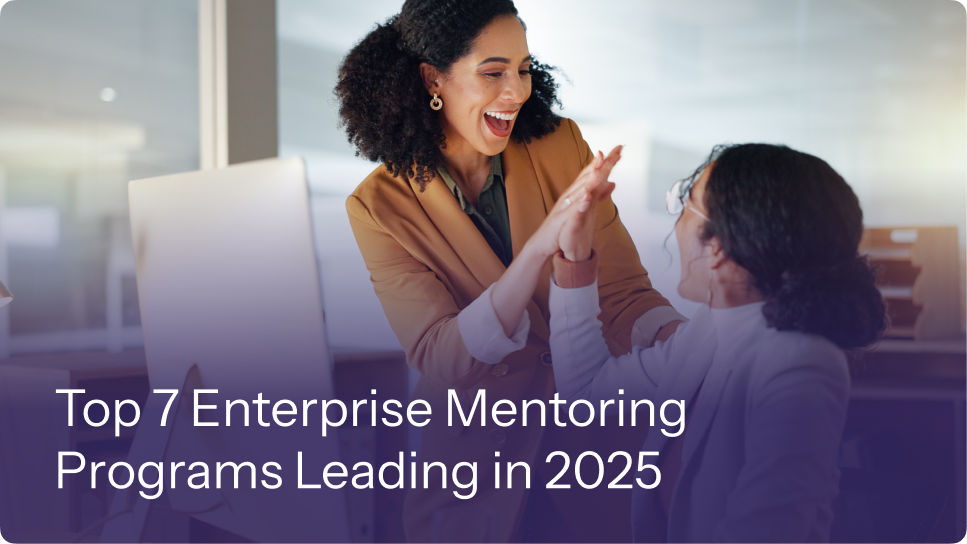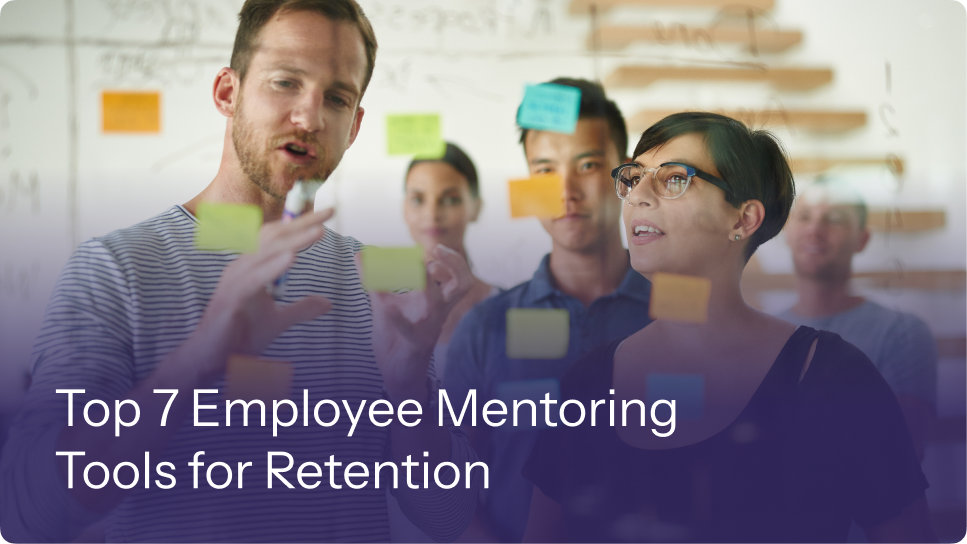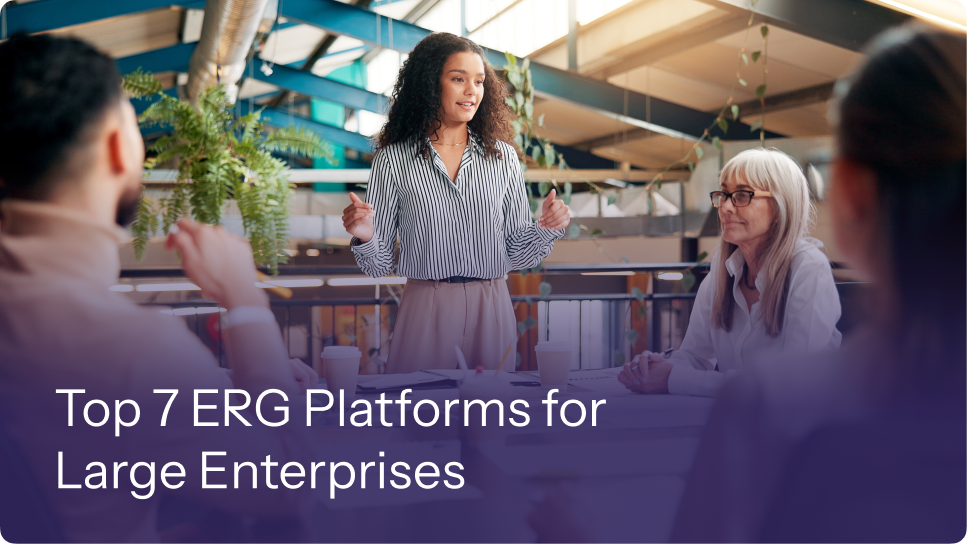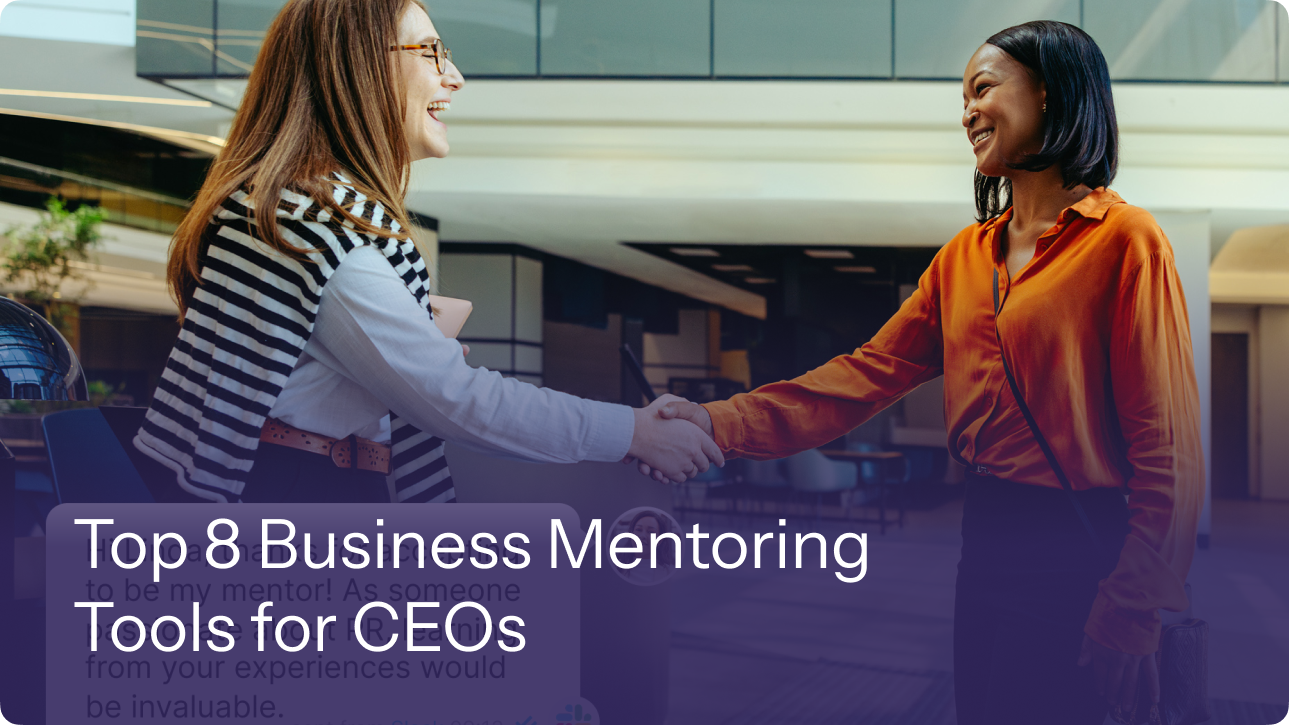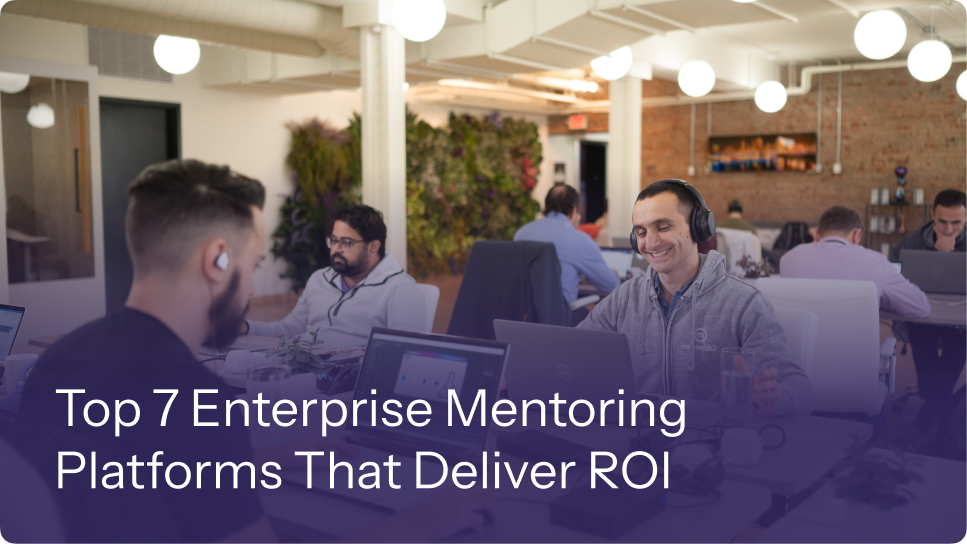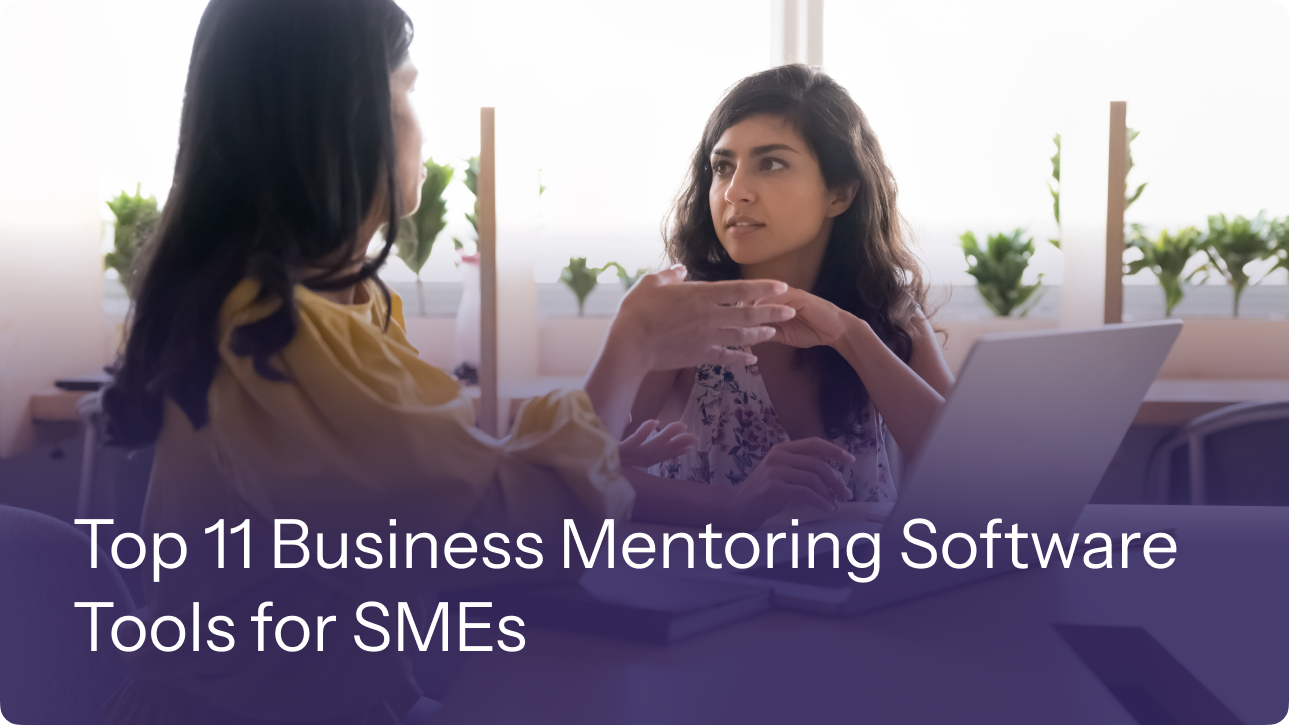Employee Resource Groups (ERGs) play a key role in helping employees connect, share experiences, and advance inclusion. They provide a space for underrepresented voices while strengthening a company’s sense of belonging and shared purpose.
As ERGs mature, maintaining engagement becomes more complex. Without structured systems, leaders often spend significant time managing communication, attendance, and reporting — leaving little room to focus on community building and impact.
According to MentorcliQ’s Mentoring Impact Report, 76% of employees say mentoring increased their sense of belonging at work. This same principle applies to ERGs — when engagement is supported through structure and data, participation and retention rise significantly.
By investing in ERG management software, organizations can centralize communication, automate processes, and track outcomes — turning employee-led groups into measurable drivers of connection and growth.
What Is an ERG Platform?
An ERG platform is software that enables companies to manage Employee Resource Groups (ERGs) or Affinity Networks efficiently. It provides centralized tools for communication, membership management, event coordination, analytics, and executive reporting. ERG platforms help formalize and scale these initiatives across organizations.
According to the Oxford Dictionary of Business and Management, an employee resource group is “a voluntary, employee-led collective formed around shared identities or interests to foster inclusion and community.”
Key Features of ERG Platforms You Should Look For
Selecting the right ERG platform means focusing on tools that create lasting engagement while reducing administrative effort. The best solutions combine user experience, automation, and data insights to help ERG leaders and DEI teams manage communities at scale.
Member Onboarding and Management
This feature allows employees to easily discover, join, or request new ERGs through self-service options. It helps standardize group creation while maintaining necessary oversight. Automated onboarding workflows guide new members through introductions, orientation materials, and communication channels, ensuring each participant understands the group’s purpose and how to contribute effectively.
Event and Program Coordination
ERG leaders often spend hours organizing events manually. Event coordination tools simplify this process by centralizing calendars, RSVPs, feedback surveys, and post-event analytics in one platform. Many systems integrate with calendar and email tools, reducing administrative effort and ensuring events are well attended and recorded for reporting purposes.
Communication and Collaboration Tools
Sustained engagement depends on consistent communication. Built-in discussion boards, messaging functions, and announcements make it easier to share updates and celebrate milestones. Some platforms integrate directly with Microsoft Teams, Slack, or email clients, allowing employees to stay connected in the tools they already use daily.
Analytics and Reporting
Leaders need clear visibility into ERG participation and outcomes. Analytics dashboards track membership growth, attendance, engagement frequency, and diversity metrics. They translate activity into measurable insights that demonstrate ERG value to executives and support data-driven DEI planning. Automated reporting also saves significant time for administrators preparing leadership summaries.
Integration and Scalability
As organizations grow, their ERG platforms must expand alongside them. Integration capabilities connect ERG data with HR systems, Single Sign-On (SSO), and internal analytics tools. Scalable architecture ensures consistency across global chapters, allowing regional flexibility while maintaining a unified approach to inclusion and engagement.
Mentoring and Development Connections
Many ERGs focus on professional development, and platforms with built-in mentoring tools strengthen this connection. Matching algorithms, career discussions, and tracking features help members develop relationships that drive learning and advancement. This alignment turns ERG participation into a measurable component of employee growth.
8 Best ERG Platforms for Boosting Engagement
1. MentorcliQ (CommunityCliQ)
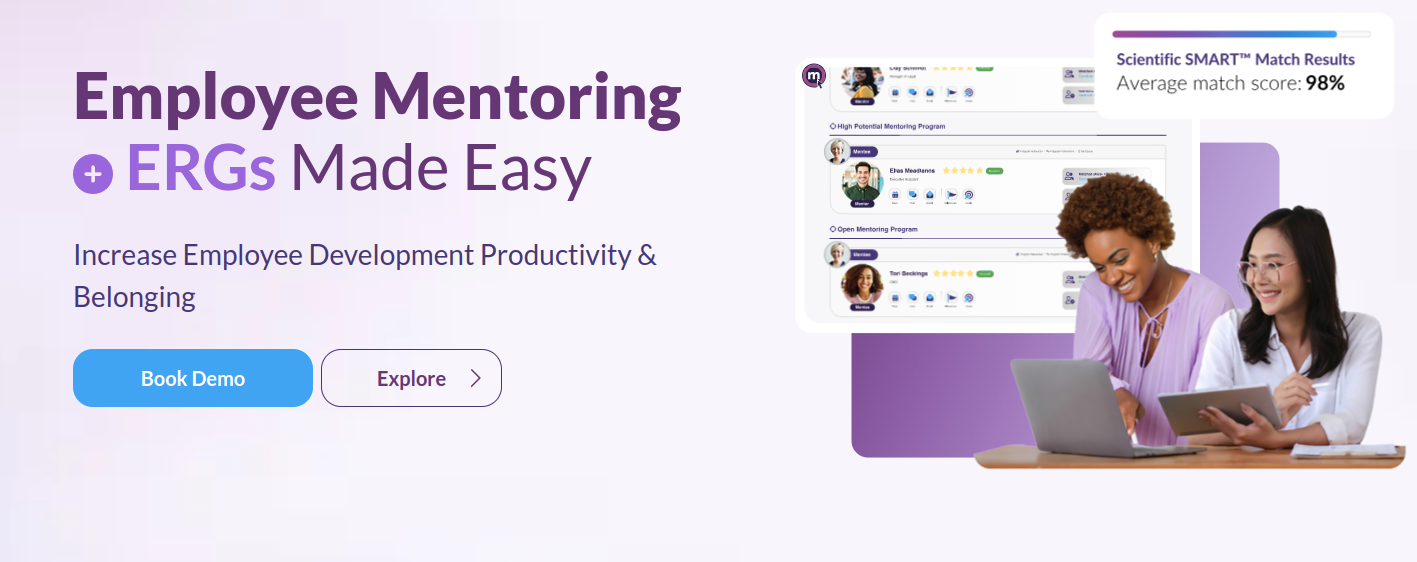
MentorcliQ’s CommunityCliQ brings mentoring and ERG management together in one integrated platform. It supports employee-led communities, inclusion networks, and mentoring circles, allowing organizations to scale engagement and measure impact across all talent programs. Trusted by global enterprises, CommunityCliQ combines robust analytics with an intuitive user experience that supports both administrators and ERG leaders.
Key Features of MentorcliQ
- Integrated ERG and Mentoring Programs: Unites ERG initiatives and mentoring for greater career impact.
- Automated Engagement Tracking: Measures participation, events, and retention outcomes across groups.
- Centralized Administration: Reduces manual tracking and aligns ERG activity with HR data.
Best for: Large organizations seeking to integrate ERG engagement with mentoring, inclusion, and career development strategies.
2. Qooper
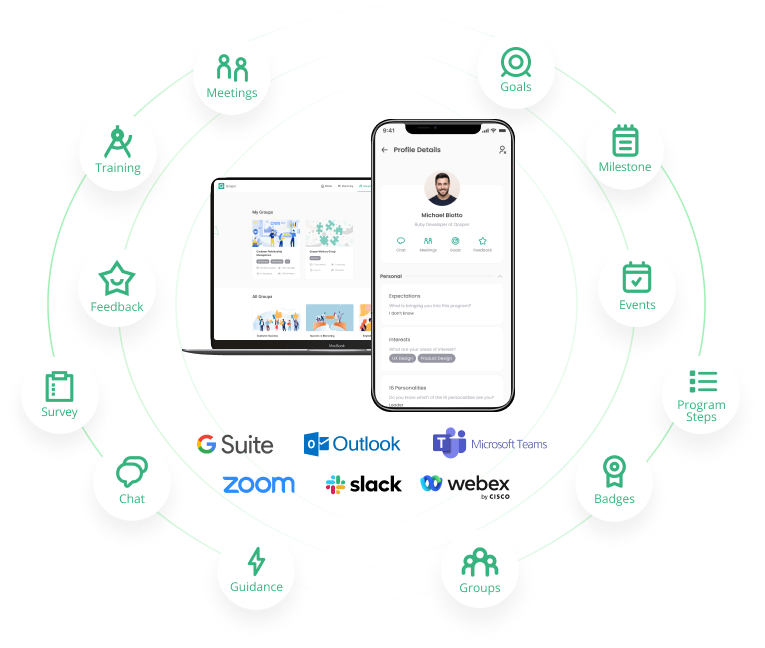
Qooper offers a versatile engagement and mentoring platform that supports ERG structures. Its automated workflows simplify community management while providing analytics to measure engagement and participation.
Key Features of Qooper
- Mentoring and Networking Tools: Connects members within ERGs for structured development.
- Engagement Dashboards: Tracks attendance and communication metrics.
- Mobile and Web Access: Ensures ease of use across devices.
Best for: Companies that already use mentoring software and want to extend it to ERG engagement.
3. Teleskope Affinities
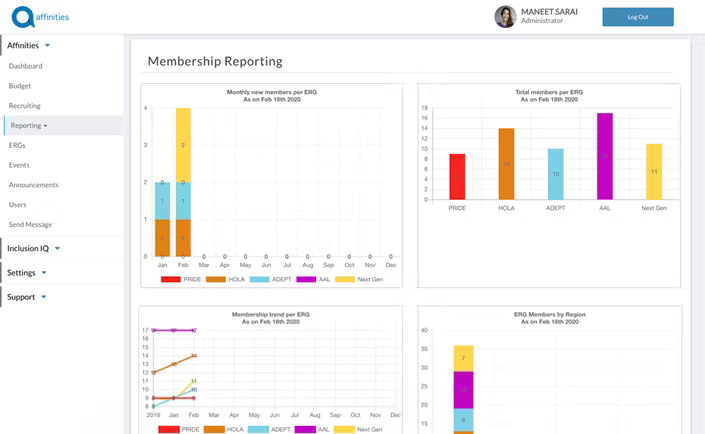
Teleskope’s “Affinities” module allows organizations to manage ERGs, inclusion networks, and DEI initiatives under one umbrella. It offers global scalability and governance support for large enterprises.
Key Features of Teleskope
- Chapter-Level Management: Enables local flexibility within a global framework.
- Comprehensive Analytics: Delivers insights on ERG reach, diversity metrics, and impact.
- Data Privacy Controls: Maintains compliance with enterprise-level security standards.
Best for: Multinational organizations managing multiple ERGs across geographies.
4. Chezie
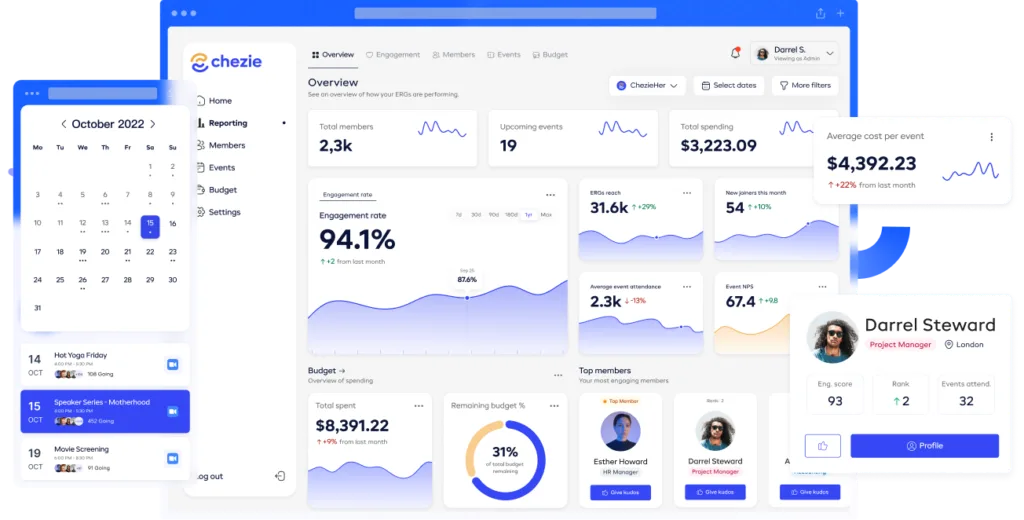
Chezie focuses on building community-driven ERGs with tools that promote recognition and connection. The platform’s user experience encourages continuous participation through gamification and recognition features.
Key Features of Chezie
- Recognition and Badges: Motivates members to engage consistently.
- Event and Resource Hubs: Consolidates materials and updates in one place.
- Mobile-First Design: Encourages daily use and accessibility.
Best for: Organizations emphasizing community-building and peer-led engagement.
5. Affirmity
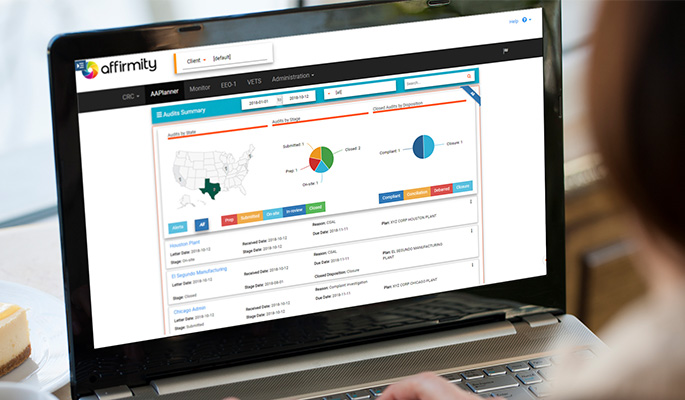
Affirmity integrates ERG management with diversity analytics and compliance. Its platform provides organizations with visibility into participation rates and engagement impact across their DEI portfolio.
Key Features of Affirmity
- Participation Tracking: Measures ERG growth and engagement.
- Diversity Data Integration: Links ERG activity with organizational DEI metrics.
- Event Coordination Tools: Simplifies scheduling and reporting.
Best for: Companies that need strong compliance alignment and reporting visibility.
6. Benevity
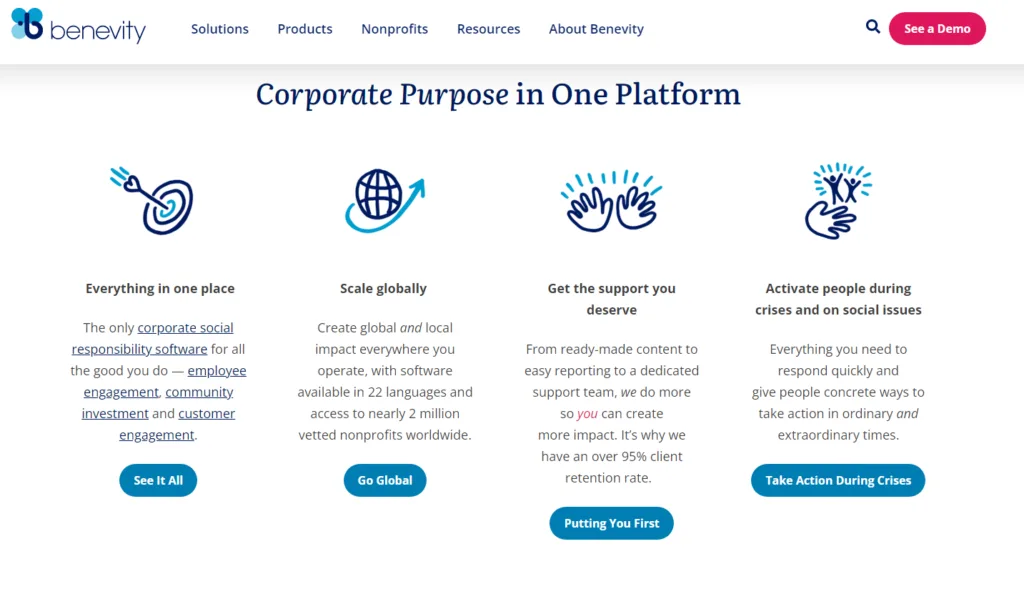
Benevity’s Employee Groups platform extends its CSR and volunteering tools into the inclusion space. It supports ERG creation, collaboration, and purpose-driven initiatives.
Key Features of Benevity
- Cross-Functional Integration: Links ERG activities with volunteering and giving programs.
- Centralized Communication: Promotes consistent messaging and participation.
- Impact Reporting: Ties ERG engagement to social impact metrics.
Best for: Purpose-driven companies connecting DEI and social responsibility programs.
7. iTribe
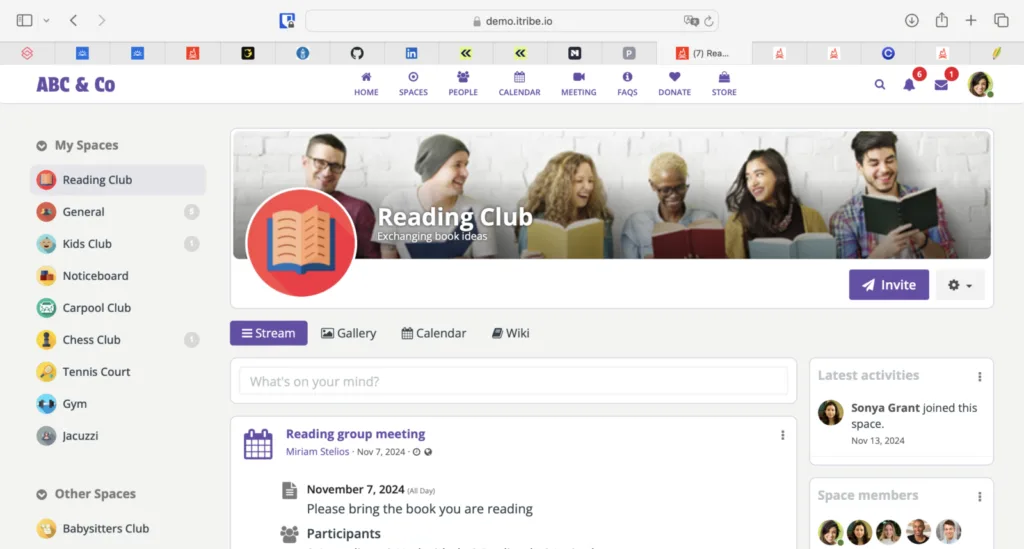
iTribe provides secure, flexible tools for building digital ERG communities. Its customizable structure helps organizations tailor engagement models to their unique culture.
Key Features of iTribe
- Customizable Community Frameworks: Adapts to different ERG types and goals.
- Gamification Features: Encourages friendly competition and engagement.
- Data Security Standards: Protects employee data across all chapters.
Best for: Mid-sized to large companies seeking flexibility in how ERGs operate.
8. ERG Insight™ (Stratus)
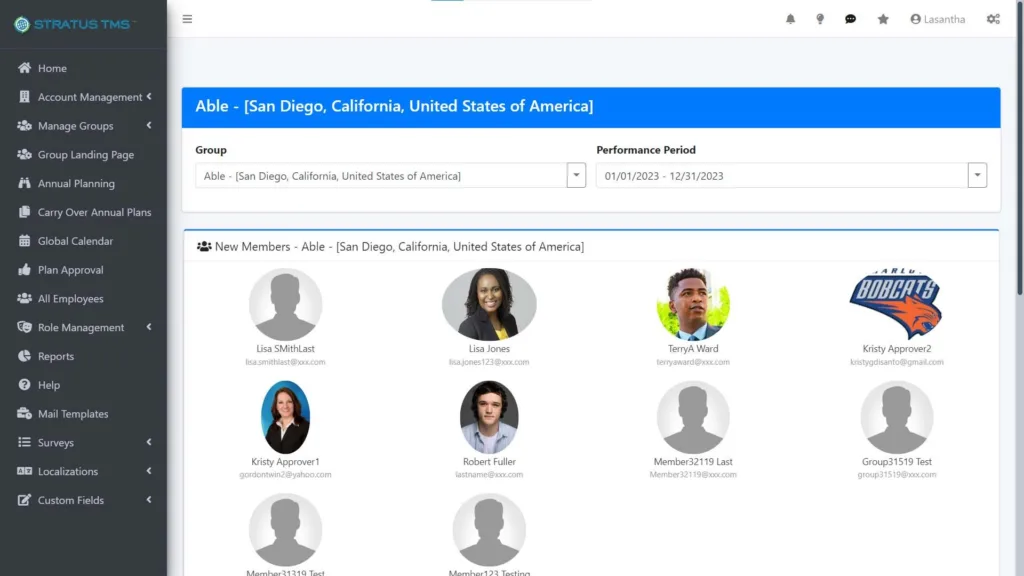
ERG Insight™ supports event planning, participation tracking, and reporting to simplify ERG operations. It provides visibility into ERG activity for leadership and DEI teams.
Key Features of ERG Insight™
- Centralized Event Management: Simplifies planning and coordination.
- ERG Health Dashboards: Visualizes member engagement and attendance trends.
- Budget and Resource Tracking: Helps ERG leaders manage funding transparently.
Best for: Organizations running multiple ERGs that need oversight and consistency.
Benefits of ERG Platforms
Implementing an ERG platform does more than organize employee communities — it strengthens engagement, retention, and belonging across the workforce. These platforms provide structure, visibility, and consistency to what are often volunteer-led initiatives. By combining automation with analytics, they allow organizations to scale ERG impact and connect participation data directly to business outcomes.
Improved ERG Engagement
Automated reminders, onboarding workflows, and accessible tools encourage continuous member participation. Employees stay involved because the experience feels easy, organized, and rewarding.
Streamlined Administration
Leaders and program owners save significant time through automation and centralized communication. This allows ERG leaders to focus on strategy, events, and mentoring — not manual coordination.
Measurable Impact
Dashboards link engagement metrics with business outcomes such as retention, advancement, and inclusion growth. This visibility helps secure leadership support and long-term investment.
Alignment with DEI and Talent Goals
When ERGs connect to mentoring and inclusion analytics, they contribute directly to retention, advancement, and belonging.
Knowledge Retention and Continuity
Centralized documentation and shared resources help maintain consistency as ERG leaders transition. This continuity ensures each group builds on previous progress rather than starting over.
Building an Engaged ERG Community
For HR and DEI leaders, adopting an ERG platform is a strategic investment in belonging. The right system brings structure, visibility, and accountability to employee-led initiatives — creating a scalable foundation for inclusion.
Book a Demo with MentorcliQ to learn how your organization can build stronger, measurable, and more connected ERG programs through CommunityCliQ.

